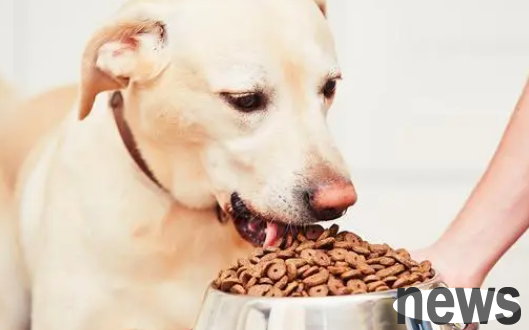Dogs keep tickling, are there lice?
Check refers to a discomfortable feeling in the skin, which causes the desire to scratch, scratch and scratch the skin.
is a symptom, not a disease!
The most common causes of itching in dogs are cysticariae, infection and allergies.
Many skin diseases are not easy to cause itching at the beginning, and it is caused by primary bacteria or bacterial infection. When the itching begins, the secondary symptoms will have long subsided.
Itchy dogs keep tickling their skin.
The symptoms of itch will be spread all over the body or be limited to a part of the human body.
How to confirm the diagnosis
If you take the dog to the hospital, the doctor will ask the skin medical record for the dog to conduct a complete skin examination (including skin/ear hole full body examination, skin itchy and skin damage assessment, skin/ear cytology examination, etc.). First, remove itching caused by ectoparasiosis, and remove infections from fungi and bacteria.
Excessive tickling of the face and limbs is a common symptom of fungal and bacterial infection.
Infection is often accompanied by hair loss, psoriasis, taste and leakage of water.
If you suspect that fungal and bacteria are infected, the pet doctor can prescribe antibiotics for 21-30 days.
If the itch subsides after the application of the therapeutic drug, it can be clearly stated that it is caused by infection with microbial bacteria (commercial services, bacteria, etc.).

*If the dog's itchy symptoms have not changed or have only slightly improved, the direct cause may be allergies. There are three most common causes of itching caused by allergies: food allergies after effecation of ectoparasiosis
Food allergies
Natural environmental allergies (such as bee pollen, Aspergillus aflatoxin or dust mites, etc.) are very easy to identify allergies caused by insect bites.
If it is periodic, the itch in the dog is likely caused by a periodic allergic source.
The annual itchy symptoms of dogs will be associated with food allergies.
When you suspect food allergies
, you must conduct food allergen experiments. Food allergens are generally allowed to try new dietary combinations, such as fish or meat, which the dog has never eaten before. In order to help clarify food allergens, pet owners must strictly implement diagnosis and treatment marks, maintain the dog's dietary matching that meets the requirements, and prevent eating any plan and plan requirements other than the ingredients.
Note: Allergy experiments and intradermal injection experiments only show the allergies in the way of exposure of antigens. This test is generally used to identify dogs allergic to pre-vaccination or syringe components, but is usually ineffective in food allergies.
Healing
Healing success lies in discovering the root cause of itching.
If the cause of itching is uncertain, or the treatment of secondary diseases cannot alleviate the symptoms of itching, treatment must be carried out for the affected dog.
Popular oral medications for Xiaoling include antihistamines, hormone drugs, etc.
Apart from hiring a pet doctor, what can the owner do at home?
(1) In addition to regular body insect removal agents, combined with mouse detoxification agents, moderately increase the frequency of bathing, bathing can cleanse allergens on the skin. Since dogs have thinner and tenderer skin (yes, you are right, your skin is much thicker than your dog’s skin), apply softer, nutritious dog-specific bath or bath products.
3 Maintaining skin environment humidity
dryness will cause itching and increase. If the ambient humidity is less than 50% per year, you can consider buying an air humidifier.
For dogs who are very prone to itching, blow 890% dryness in each shower, or take a shower with moisturizing and moisturizing to prevent excessive dryness in the skin.
Filling essential fatty acids Filling essential fatty acids In short time, dogs with poor skin resistance are proposed to fill essential fatty acids such as fish oil on time.
Feed a balanced diet to prevent foods with sensitive height and aspect ratios from changing the current situation, cleaning up dust, applying unique deodorants to pets, disinfecting them on time, and preventing touching allergens















